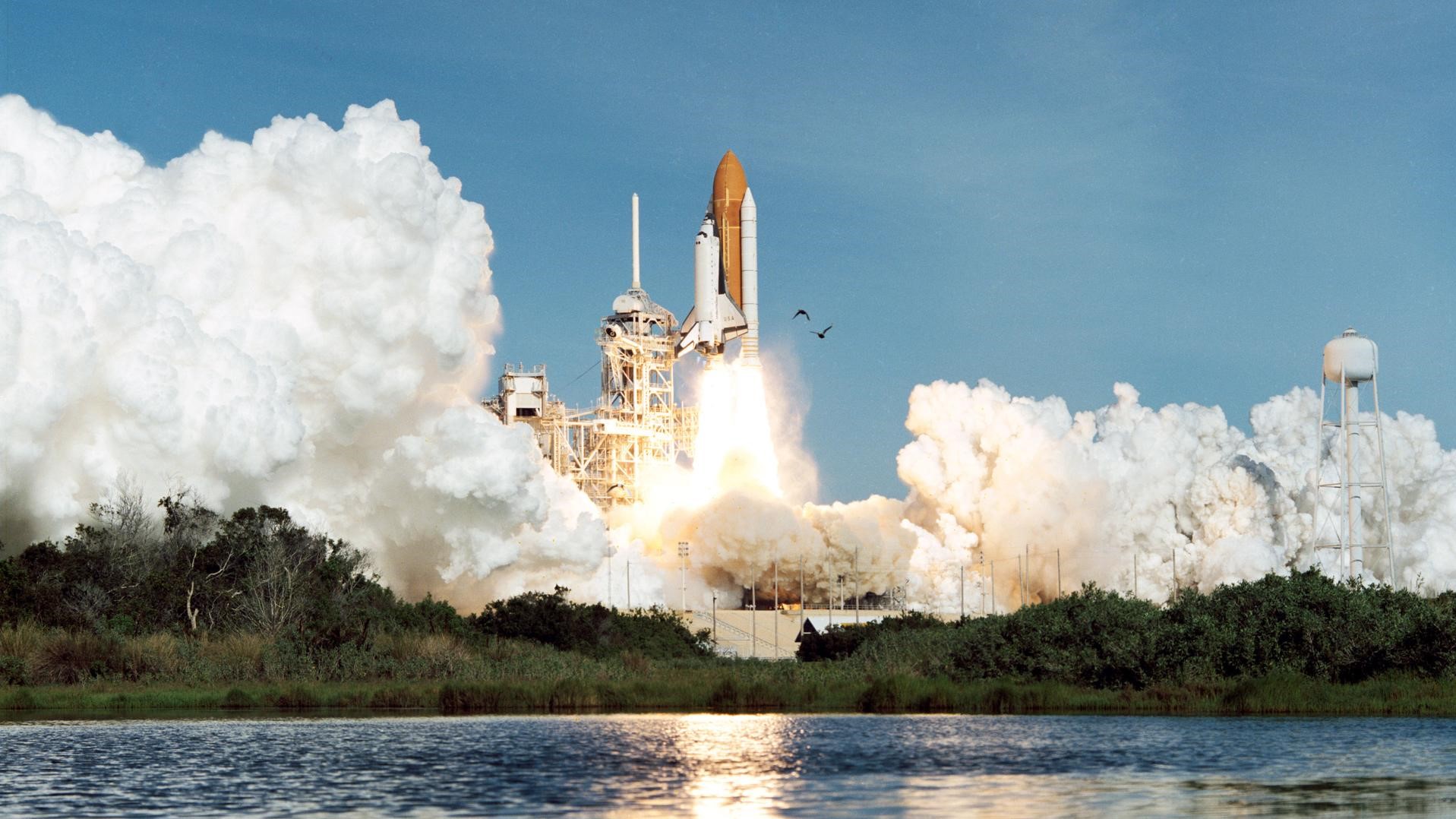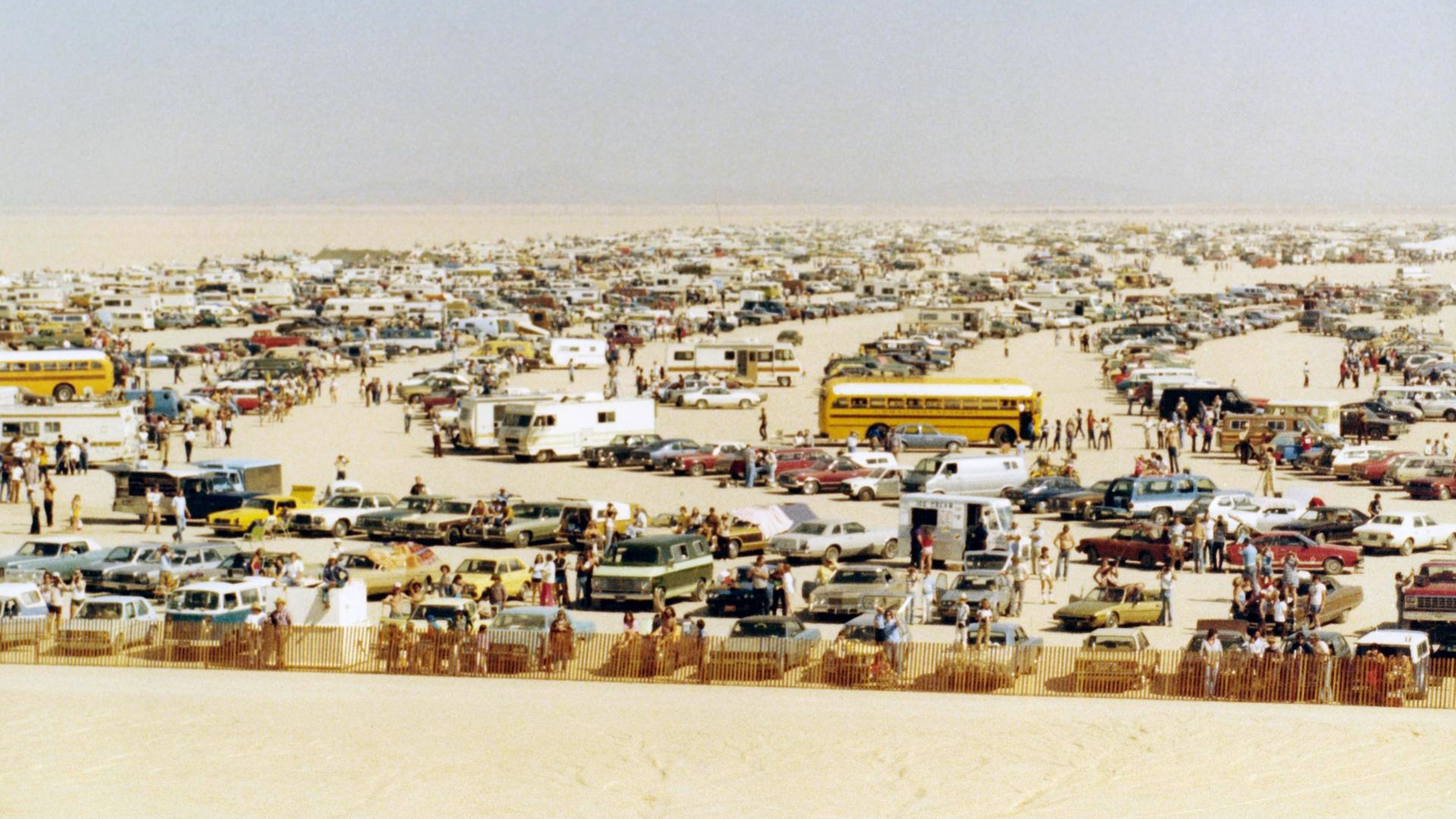Space shuttle Columbia: NASA's first shuttle in space
Space shuttle Columbia ushered in a new era of spaceflight.

Space shuttle Columbia was the first shuttle to reach space when it was launched from NASA's Kennedy Space Center on Apr. 12, 1981.
Columbia carried dozens of astronauts into space during the next two decades, reaching several milestones. The shuttle also underwent upgrades as technology advanced.
Space shuttle Columbia's final mission ended in disaster. The shuttle and seven-member crew were lost over Texas when Columbia burned up during reentry on Feb 1, 2003. Columbia's loss prompted NASA to do extra safety checks in orbit for all future missions.
Related: Columbia Disaster: What happened and what NASA learned
Space shuttle Columbia: Decades of development
Discussions on developing a reusable spacecraft began in earnest in 1966, when NASA was looking to figure out what programs would come after Apollo. While NASA was tasked with beginning the work, development was held off for years by budgetary constraints, according to NASA history documents.
Work resumed more seriously when the first landing on the moon was imminent, in 1969. At that time, then-President Richard Nixon appointed a Space Task Group to look at future space options, and in subsequent years NASA began awarding design contracts for shuttle ideas.
However, according to NASA history documents, when NASA submitted its September 1970 budget to the White House, it became clear that the Nixon administration and Congress would not support the development of a space station and space shuttle at the same time. So NASA was forced to rethink its expectations and make some changes to reduce costs.
Breaking space news, the latest updates on rocket launches, skywatching events and more!
– First flight: STS-1 (Apr. 12 -14, 1981)
– Last flight: STS-107 (Jan. 16, 2003 - Feb. 1, 2003)
– Number of missions: 28
– Time in space: 300 days, 17 hours, 40 minutes, 22 seconds (Source: CBS)
Some compromises were made in the design in response to budgetary constraints and input from the military, which was expected to be a major customer of the shuttle. For example, the size of the cargo bay was increased to accommodate large military satellites. Also, it was decided to make the shuttle only partially reusable instead of fully reusable to save on development costs, although critics noted this would increase the costs of individual flights according to NASA history documents.
Construction began on a prototype on Jun. 4, 1974. That spacecraft was designated Enterprise. Its purpose was to perform test flights and landings, space shuttle Enterprise never flew into outer space. Construction on space shuttle Columbia began on Mar. 27, 1975.
The space shuttle Columbia was named after the first American ship to circumnavigate the globe and also the command module for the Apollo 11 moon landing according to NASA.
Space Shuttle Columbia flight milestones
Space shuttle Columbia's first flight into space took place on Apr. 12, 1981, according to NASA. The shuttle program was officially referred to as the Space Transportation System (STS), so this flight was STS-1. The mission had a two-person crew: the commander, John Young, a veteran of Gemini and Apollo, and the pilot, Bob Crippen. The objective was to make sure that Columbia worked well in space. Media attention, in particular, focused on the new system of 30,000 individual tiles covering the shuttle, which NASA had struggled with during the early days, according to NASA history documents.
Columbia returned from its first mission safely and several more test flights ran between 1981 and 1982. This included perhaps the most dramatic landing of the shuttle program, STS-3. An "autoland" system malfunctioned before landing on STS-3; the crew took over (as planned) just before landing, but the shuttle touched the runway faster than normal. After landing, Columbia's nose pitched up unexpectedly due to a software problem, according to commander Jack Lousma's oral history with NASA.
Space shuttle Columbia's first operational flight was STS-5, when it launched on Nov. 11, 1982, and deployed two commercial communications satellites, according to NASA.
The first operational flight for Columbia was STS-5 in November 1982. NASA's shuttle Challenger then took on the next three flights, and then Columbia flew once more in November 1983 (STS-9), carrying the Spacelab experiment module for the first time as well as the first European Space Agency astronaut Ulf Merbold of Germany, according to NASA.
Columbia was then shelved for major upgrades (including adding heads-up displays) before flying on just one mission in 1986; that mission carried Democrat Bill Nelson on board, among the astronauts. (Nelson would go on to become NASA Administrator in 2020 after leaving the Senate.) Shuttle operations were interrupted by the Space shuttle Challenger disaster in January 1986. It wouldn't be until 1989 that Columbia flew again.
Related: In photos: NASA's first space shuttle flight, STS-1 on Columbia
Space Shuttle Columbia Science and telescope operations
Columbia flew 28 missions in its lifetime, logging more than 300 days in space. In its earliest days, it participated in repairing and deploying satellites and telescopes, but as NASA's priorities changed to science, Columbia flew several productive science missions in the 1990s and 2000s.
Over the years it flew several microgravity laboratory missions and on Feb. 22, 1996, launched on mission STS-75 with a tethered satellite system experiment. The mission was designed to carry the Tethered Satellite System Reflight (TSS-1R) into orbit and then deploy it from a tether, according to ESA. However, the tether broke before it had reached the desired distance of 12.9 miles (20.7 km), according to ESA.
In 1999 and 2002, though, Columbia shifted operations back into telescope operations. STS-93 was scheduled to fly on Jul. 20, 1999, to send the Chandra X-Ray Observatory into space.
According to NASA, a suspected hydrogen problem scrubbed the initial launch only seven seconds before liftoff, but upon further examination, NASA determined that the high readings were false.
Columbia lifted off on the Chandra X-ray Observatory mission (STS-93) on Jul. 23, 1999, but its orbit was seven miles shallower than planned due to a slightly early main engine cutoff, according to NASA. Adjustments in orbit were necessary to bring Columbia to the correct altitude and the crew successfully deployed Chandra during the mission.
Space shuttle Columbia's final successful mission was the Hubble Space Telescope Servicing mission — STS-109 when Columbia launched on Mar. 1, 2002.
Columbia's mission included five spacewalks to service the Hubble Space Telescope; where astronauts replaced an aging power control unit, removed and installed solar arrays and conducted science instrument upgrades. Servicing time hit a record, at the time, of 35 hours and 55 minutes, breaking the previous record of 35 hours and 28 minutes set by Hubble's first servicing mission STS-61, according to NASA.
This would be Columbia's next-to-last mission in orbit, although nobody knew it at the time.
The Columbia disaster
Space shuttle Columbia's final flight was STS-107, a nearly 16-day research mission focusing on scientific experiments. The STS-107 crew included the first Israeli astronaut, Ilan Ramon, and the first Indian-born woman in space, Kalpana Chawla.
On Feb. 1, 2003, NASA lost contact with Space Shuttle Columbia during the final minutes of its reentry over Texas.
Controllers spent several minutes trying to hail the shuttle as the families of the astronauts waited at the expected landing site at the Kennedy Space Center.
As the communications blackout lengthened, and video footage emerged of a large flying object breaking into pieces, it became clear that the crew had not survived.
According to a crew survival report released by NASA in 2008, the crew likely lived through the initial breakup but fell unconscious quickly as the cabin depressurized. They died as the shuttle broke up around them. According to the crew survival report, their remains were retrieved from the ground and identified through DNA and dental records.
Commander: Rick Husband
Pilot: Willie McCool
Payload Commander: Michael Anderson
Mission Specialists: Kalpana Chawla, David Brown, Laurel Clark
Payload Specialist: Ilan Ramon
The Columbia Accident Investigation Board was formed to look at the causes of the breakup and to prevent it from happening again. Harold W. Gehman Jr., former commander-in-chief of the U.S. Joint Forces Command, chaired the board. It included participation from a dozen people, including NASA officials and former astronaut Sally Ride, who was also a member of Challenger's investigation.
The board concluded that a piece of foam from Columbia's external tank hit the shuttle during launch and caused a fatal breach in Columbia's wing. This "foam debris" problem was well-known and documented in the years before Columbia's launch, but over time NASA grew to accept it as part of spaceflight. The board recommended this problem be addressed.
NASA made changes to the external tank as well as put in new safety procedures for shuttle missions. Among them, on every spaceflight, the crew was required to spend several hours scanning the shuttle's bottom for broken tiles.
Forever remembered
NASA still remembers Space shuttle Columbia, as well as past crews lost in the pursuit of spaceflight, on an annual Day of Remembrance every January. Several memorials have been dedicated to the crew as well. For example, seven asteroids that orbit the sun between Mars and Jupiter were named after the seven crew members of STS-107.
Visitors to the Kennedy Space Center can view debris from the Columbia mission (as well as Challenger) at an exhibit called "Forever Remembered," which opened in 2015. The debris is on display at the visitor's center and shows window frames from Columbia, as well as personal artifacts from the astronauts. The families of the astronauts collaborated on creating the exhibit.
Meanwhile, some of the experiments from Columbia's last flight returned useful data. This included a set of roundworms (Caenorhabditis elegans) that survived reentry and successfully reproduced. Some of the descendants flew in space aboard space shuttle Endeavour in May 2011.
Additional resources
- Reflect on spaceflight history with the Smithsonian Air and Space Museum.
- Take part in NASA's Day of Remembrance.
- Explore the Kennedy Space Center exhibit "Forever Remembered".
Join our Space Forums to keep talking space on the latest missions, night sky and more! And if you have a news tip, correction or comment, let us know at: community@space.com.

Elizabeth Howell (she/her), Ph.D., was a staff writer in the spaceflight channel between 2022 and 2024 specializing in Canadian space news. She was contributing writer for Space.com for 10 years from 2012 to 2024. Elizabeth's reporting includes multiple exclusives with the White House, leading world coverage about a lost-and-found space tomato on the International Space Station, witnessing five human spaceflight launches on two continents, flying parabolic, working inside a spacesuit, and participating in a simulated Mars mission. Her latest book, "Why Am I Taller?" (ECW Press, 2022) is co-written with astronaut Dave Williams.


